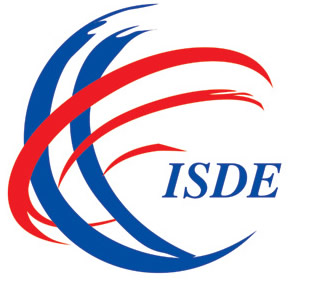International Society for Digital Earth
- Home/
- Events/
- Geo Week 2022 /
- Statements/
- Full Statement
Group on Earth Observations – GEO Week 2022
Statement of International Society for Digital Earth
With the global response to the initiative of "Digital Earth" raised by the former US Vice President Al Gore, the first International Symposium on Digital Earth was held in Beijing China in 1999. More than one thousand scientists, engineers, educators and governors from nearly 40 countries worldwide attended the symposium, and approved the 1999 Beijing Declaration on Digital Earth. During this symposium, an International Steering Committee of the International Symposium on Digital Earth was established to organize subsequent symposia in the coming years. In 2006, the International Society for Digital Earth was formally established and the secretariat was hosted by the Chinese Academy of Sciences.
ISDE is an international organization principally promoting academic exchange, science and technology innovation, education, and international collaboration towards Digital Earth.
ISDE pays particular attention to advance research on spatial science and facilitate knowledge sharing . Following the success of the first symposium, series of symposia are held every two years in different countries. After 20 years’ development, twelve symposia and nine summits have been held in 14 countries worldwide.
In addition ISDE publishes two international peer-reviewed academic journals – the International Journal of Digital Earth (IJDE) and the Big Earth Data (BEDJ). The two journals were jointly published by ISDE and Taylor & Francis Group. IJDE was inaugurated in March 2008 whereas BED was launched in 2017. In 2019, ISDE published the Manual of Digital Earth, the first scientific book of Digital Earth. This book, co-edited by Prof. Huadong Guo, Prof. Mike Goodchild, and Dr. Alessandro Annoni, was contributed by more than 100 authors from 18 countries worldwide. It mainly covers the current status and future directions for Digital Earth research, a systematic analysis of the theories, methods, and technical systems of Digital Earth, and a summary of the key achievements to date, and predicts the likely direction and probable future developments within the discipline.
The vision of Digital Earth continues to evolve adapting to the progress of the technology and to the socio-economic impacts of the Digital Transformation. For better understanding these impact and the benefit of Earth Observation in 2019 six working group were established on topics of relevance for DE:
- Science and Technology for Digital Earth
- Industry Engagement for Digital Earth
- Digital Earth Governance and Ethics
- Citizen Engagement and Empowerment in Digital Earth
- Education and Capacity Building for Digital Earth
- Contribution of Digital Earth to Sustainable Development Goals
In addition to watching the progress of digital technologies and collecting successful applications (e.g. SDG) ISDE pays particular attention to :
- the transition between spatial data infrastructures toward data ecosystems
- the use of Artificial Intelligence and its impact (including ethical issues)
- the transition from human to machine decisions and the use of digital twins
- the digital governance of a data ecosystem including public data, private sector data, personal data and IoT
- the citizen science and citizen engagement processes and tools
- the education using digital technologies
- ..
ISDE is a multidisciplinary and multitechnology society. We consider EO data and EO methods essential for understanding our planet in particular when combined with other data and other technologies.
In 2009, ISDE joined the Group on Earth Observations (GEO). In 2017, the ISDE was recognized as a member of the International Science Council. In August 2019, ISDE becomes a member of the United Nations Committee of Experts on Global Geospatial Information Management-Geospatial Societies (UN-GGIM GS). In June 2022 ISDE signed a Memorandum of Understanding with ISPRS.
One major advantage of international scientific collaboration is the ability of participating scientists to compare and contrast a broad array of methods across different countries and communities. Advances in Photogrammetry, Remote Sensing and Spatial Information sciences will provide new tools and data to better understand what happens on the Earth. When combined with socio and economic data and the use of complex models they become a key tool for understanding, modelling and predicting the dynamics of our planet as consequences of the different drivers. The International Society for Digital Earth is promoting the implementation of the Digital Earth vision aiming to develop a Digital Replica of the Earth addressing the changes in technology, science and society. The collaboration with ISPRS is a crucial step to follow the progress of their technologies but as well to better understand the possible impact on the economy and the society.
ISDE that is now widely recognized globally as a leadership organization in geospatial information science research confirms its commitment to contribute to GEO as platform for spatial science sharing but as well with his position and vision papers that could be inspirational for the future evolution of GEOSS.



